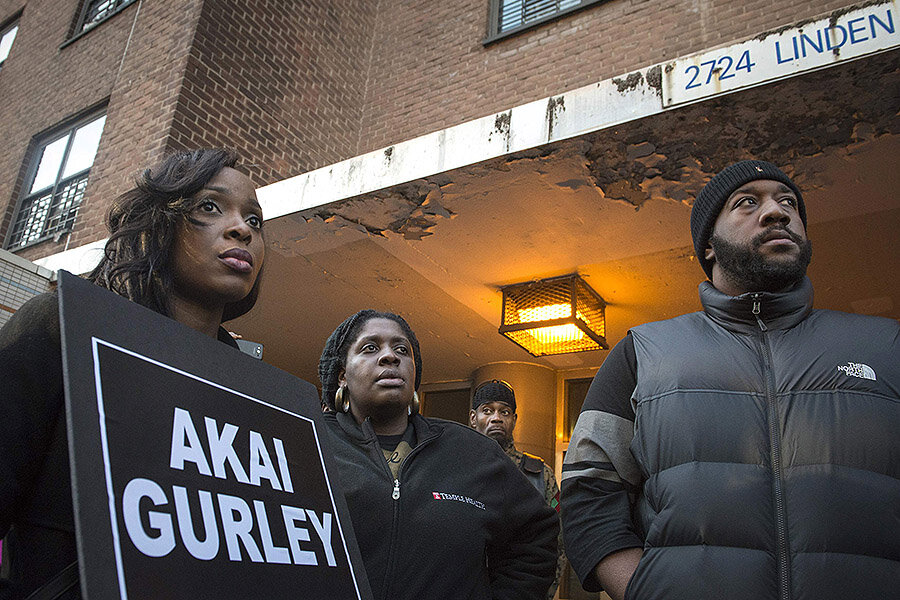Trial begins for New York cop in shooting of unarmed black man
The trial of New York Police Officer Peter Liang, whose fatal shooting of Akai Gurley in a Brooklyn stairwell added to popular outrage about police killings of black men, will begin Thursday.
Officer Liang, a NYPD rookie who accidentally shot Mr. Gurley while patrolling a public housing stairwell with his partner Shaun Landau on November 20, 2014, faces charges of manslaughter, reckless endangerment, and official misconduct.
Liang's verdict may hinge on whether he should have unholstered his Glock 9-mm gun as the pair conducted a "vertical patrol" in the dark stairways of the Louis H. Pink Houses in East New York, Brooklyn. In controversial "vertical patrol," which are commonly used by the NYPD, officers descend from the roof of a building, walking through stairwells back to the basement.
"These are an essential part of policing," NYPD Commissioner William Bratton said soon after the shooting, "every bit as essential in policing housing developments as the sector car is to policing the streets of a precinct."
Critics contend that the cramped, poorly-lit stairwells create danger for police and residents, reducing their line of sight and creating the conditions for split-second decisions.
According to Brooklyn District Attorney Ken Thompson, Liang had his finger on the gun's trigger as he opened a door to the stairwell and accidentally fired towards the landing below, where Gurley and his partner, Melissa Butler, were walking down the stairs. The single bullet ricocheted off of a wall and struck Gurley, who was pronounced dead at the hospital.
Gurley was a father to a daughter, now aged three.
"It was just a terrible tragedy," said Robert Brown, a former police captain and one of Liang's lawyers. He is also represented by Rae Koshetz, a former NYPD deputy commissioner. The defense team says that the shooting was accidental, and Liang has pleaded not guilty. If convicted, he could be sentenced to 15 years in prison.
But to many, Gurley's death represented the country's frequent failure to hold police officers accountable for the use of force, particularly toward black men. The shooting happened just days before a grand jury failed to indict former officer Darren Wilson for the death of Michael Brown in Ferguson, Mo., a turning point in the Black Lives Matter movement that has protested similar cases of fatal police force in Baltimore, New York, and other cities around the country.
Liang is "one individual within a larger criminal justice system that permits police officers to kill with impunity and to harass our fathers, sons, daughters, and mothers," organizer Kerbie Joseph said last May outside a pretrial hearing.
More police officers have been charged with fatal shootings in 2015 than any year in a decade, as The Christian Science Monitor has previously reported, but experts caution against assuming that number will continue to rise. As of October, 12 officers had been charged, and police across the country had fatally shot more than 800 people. None of those 12, however, had been convicted.
The jury trial will likely examine whether Liang hesitated to report the shooting to superiors. In December 2014, the New York Daily News reported that Liang and his partner, Mr. Landau, were out of contact for several minutes after the shooting, although superiors and medical personnel were trying to reach them.
Landau is expected to testify for the prosecution under an immunity agreement, and Liang may testify in his own defense.
"People like to hear from the person who's charged," said Mr. Brown, one of his lawyers.
This report includes material from Reuters.







